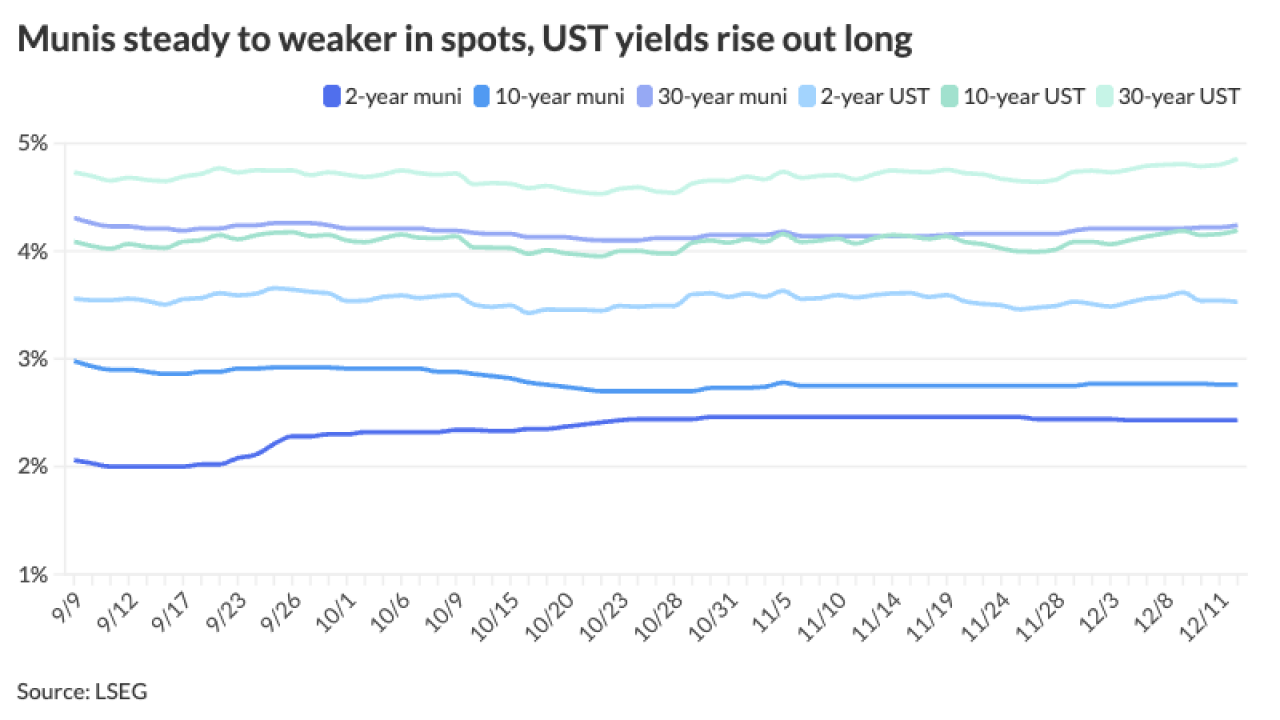Want unlimited access to top ideas and insights?
Connecticut Gov. Ned Lamont’s budget speech on Wednesday will include a far-reaching proposal by state Treasurer Shawn Wooden to shore up the wobbly state teachers' pension system.
Proposed state legislation, said Wooden, would establish a capital reserve fund; level pension payments to offset spikes in annualized contributions while honoring promises to bondholders; abide by a bond covenant to a $2 billion pension borrowing in 2008; and look to restore Connecticut’s standing in the capital markets.

“Bondholders will be paid every penny, when they expect to receive it. No change there,” Wooden said in an interview. “The 2008 bond covenant will be honored. That was very important to me and to the state’s relationship with the investor community.”
All four bond rating agencies downgraded the state over the past two years.
Pension funding shortfalls have strained the finances of many states. In Illinois, Gov. J.B. Pritzker last week announced a
Payments to Connecticut's Teachers' Retirement Fund, now $1.3 billion annually and up by 145% over the past 10 years, could soar to $6.3 billion by 2032 with no action. The new bill would enable Connecticut to smooth out payments to 2049.
Lamont and Wooden, both Democrats, took office last month.
Wooden’s legislation would initially fund the TRF, underfunded by an estimated $13 billion, with $380.9 million of the current-year surplus. State officials on Jan. 18 projected the surplus to be $461.9 million.
Lottery revenues would be pledged to replenish the capital reserve fund in the “highly unlikely” event it is tapped; state officials project net lottery revenues at $371 million in fiscal 2020, rising to $509 million in fiscal 2032.
The proposed changes could generate contribution savings of $183.4 million and $178 million in fiscal 2020 and fiscal 2021, respectively, and be nearly $1.5 billion lower than the projected $3.4 billion fiscal 2032 contribution that would have been required if the state makes no changes while achieving a 6.9% return.
According to Wooden, consulting firm PFM has stress-tested the proposal.
No appropriation would be necessary to refill the reserve fund, said Wooden, who consulted with high-level Lamont officials.
Adequate bondholder protection, said Wooden, will enable several key changes to the TRF including a drop in the return assumption-discount rate to 6.9% — the same as the State Employee Retirement System — from 8%, and changing the funding method to level-dollar amortization from percent of pay, phased in over five years.
In addition, he said, the plan is consistent with the 2017 changes to SERS funding and requires continued full funding of the actuarially determined employer contribution, unless the governor declares an emergency and both branches of the legislature approve it with a three-fifths vote.
“This plan represents a new road map for Connecticut’s fiscal future and stability, while minimizing the impact on taxpayers,” said Wooden, a former partner at Hartford law firm Day Pitney LLP who was elected treasurer in November.
In Connecticut, a state-appointed Pension Sustainability Commission weighed lottery and asset contributions during its public hearings over the past year. The state's aggregate funding ratio is about 41.4% as of September 2016, Pew Charitable Trusts reported. Pew considers 80% an acceptable threshold.
Lamont’s budget speech will address other pension and budget measures intended to plug a $3.7 billion deficit over the next two years.
Adjustments to the State Employees’ Retirement System, designed to save Connecticut $131.9 million and $141.8 million in fiscal 2020 and fiscal 2021, would include risk-sharing of cost of living adjustments for future retirees to make COLA amounts match market returns and the removal of mileage reimbursements from pension calculations.
“This reflects the realities of the marketplace and the state’s ability to pay,” Lamont said.
The governor also called for applying sales taxes on goods and services equally. Groceries will not be taxed, Lamont added, backpedaling on an idea floated shortly after he took office. In addition, he intends to negotiate a maximum price for healthcare services provided to state employees and retirees.

Budget deficits and high legacy costs — pension and bond debt combine for roughly one-third of Connecticut’s general-fund budget — have weighed on the state's ratings.
Moody’s Investors Service rates Connecticut general obligation bonds A1, while S&P Global Ratings and Fitch Ratings rate them A and A-plus, respectively. Kroll Bond Ratings Agency assigns its AA-minus rating. Kroll assigns a negative outlook, the others stable.
Wooden who briefed rating analysts last week and has also met with top lawmakers and teachers unions, said the proposal would satisfy rating-agency check boxes with operating budget flexibility, lowered assumption rate and level funding.
“This is legally sound, fiscally sound and market sound,” he said. “I care about how we’re perceived in the marketplace.”
Lamont, speaking to the Waterbury Chamber of Commerce last week, called Connecticut’s fiscal woes more severe than he had imagined.
“Maybe I thought that this was an iceberg that was a little over the horizon,” he said.
The governor has proposed reducing Connecticut’s borrowing by 39%, or hundreds of millions of dollars annually. He said his “





